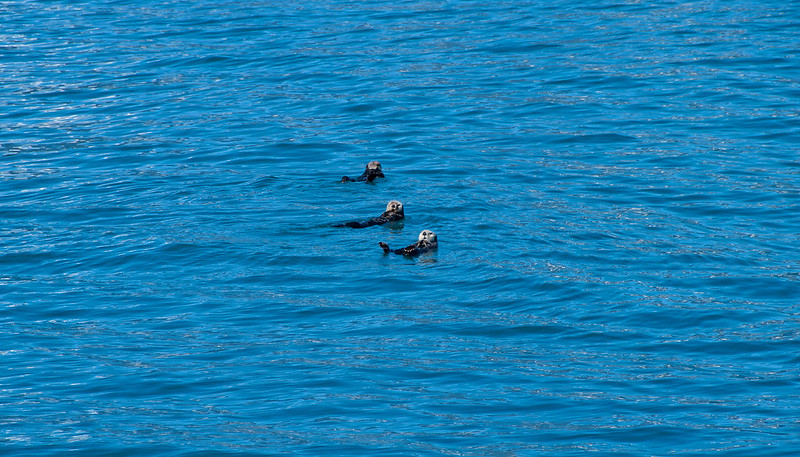The world’s oceans, covering more than 70% of the Earth’s surface, play a crucial role in regulating the planet’s climate and supporting a diverse range of ecosystems. Oceans act as carbon sinks, absorbing nearly a third of the carbon dioxide (CO₂) released into the atmosphere from human activities, particularly the burning of fossil fuels. This ability to absorb CO₂ helps mitigate climate change, but it also triggers a lesser-known and insidious phenomenon: ocean acidification.
Ocean acidification refers to the process by which the pH levels of the world’s oceans decrease due to the absorption of excessive CO₂ from the atmosphere. This process has profound implications, particularly for marine ecosystems, with coral reefs being among the most vulnerable. Coral reefs, known as the “rainforests of the sea,” support an estimated 25% of all marine species, despite covering less than 1% of the ocean floor. Understanding the science behind ocean acidification and its impact on coral reefs is critical for addressing the larger environmental challenges posed by human-induced climate change.
1. What Is Ocean Acidification?
Ocean acidification occurs when CO₂ in the atmosphere dissolves in seawater. This dissolved CO₂ reacts with water to form carbonic acid (H₂CO₃), which subsequently dissociates into bicarbonate (HCO₃⁻) and hydrogen ions (H⁺). The increase in hydrogen ions lowers the pH of the seawater, making it more acidic. While the term “acidification” might suggest highly acidic waters, the ocean remains slightly alkaline; however, the shift in pH is significant enough to disrupt marine ecosystems.
Before the Industrial Revolution, the ocean’s pH averaged around 8.2 on the pH scale. Since then, the pH has dropped to approximately 8.1, representing a 30% increase in acidity. Although this change might seem minor, it has a cascading effect on marine life, especially organisms that rely on calcium carbonate to form shells and skeletons, such as corals.
2. The Chemistry of Ocean Acidification
The chemistry of ocean acidification revolves around the interaction between CO₂ and seawater. When atmospheric CO₂ dissolves into the ocean, it undergoes a series of chemical reactions:
- CO₂ absorption: Atmospheric CO₂ dissolves into seawater.
- Carbonic acid formation: Dissolved CO₂ reacts with water to form carbonic acid (H₂CO₃).CO2+H2O→H2CO3CO₂ + H₂O \rightarrow H₂CO₃CO2+H2O→H2CO3
- Dissociation of carbonic acid: Carbonic acid is unstable and dissociates into bicarbonate (HCO₃⁻) and hydrogen ions (H⁺).H2CO3→HCO3−+H+H₂CO₃ \rightarrow HCO₃⁻ + H⁺H2CO3→HCO3−+H+
- Lower pH: The increase in hydrogen ions (H⁺) lowers the pH of the ocean, causing acidification.
The increased presence of hydrogen ions in the water reduces the availability of carbonate ions (CO₃²⁻), which are essential for calcifying organisms. Calcium carbonate (CaCO₃) is a vital building material for many marine species, including corals, mollusks, and some types of plankton. As carbonate ion concentrations decrease, these organisms struggle to form and maintain their shells and skeletons, leading to broader ecological consequences.
3. Coral Reefs and Calcium Carbonate
Coral reefs are composed of tiny organisms known as coral polyps, which secrete calcium carbonate to build their skeletons. These skeletons provide the structural foundation for entire reef ecosystems, offering habitats for a wide variety of marine species. However, the process of calcification, whereby corals and other marine organisms produce calcium carbonate, is highly sensitive to changes in the availability of carbonate ions in the water.
As ocean acidification progresses, carbonate ions become scarcer, making it increasingly difficult for corals to construct and maintain their skeletons. Studies show that ocean acidification can reduce the rate of calcification in corals by up to 50%. In extreme cases, reefs may begin to erode faster than they can grow, threatening their long-term viability.
4. Impact on Coral Growth and Reef Structure
The reduction in calcification rates due to ocean acidification has a direct impact on coral growth and the overall structure of reef ecosystems. Corals are slow-growing organisms, with many species adding just a few millimeters to their skeletons each year. Even minor reductions in growth rates can have significant long-term consequences, particularly for reefs that are already under stress from other environmental factors such as warming waters, pollution, and overfishing.
As corals struggle to maintain their skeletons, the structural integrity of entire reef systems is compromised. Weakened reefs are more vulnerable to physical damage from storms, wave action, and human activities such as fishing and tourism. Additionally, as coral growth slows, the ability of reefs to provide habitats for fish and other marine species is diminished, leading to declines in biodiversity and ecosystem health.
5. Coral Bleaching and Ocean Acidification
Coral bleaching is another significant threat to coral reefs that is exacerbated by ocean acidification. Bleaching occurs when corals expel the symbiotic algae (zooxanthellae) that live within their tissues due to stress, most commonly from elevated water temperatures. These algae provide corals with nutrients and are responsible for their vibrant colors. Without the algae, corals turn white (hence the term “bleaching”) and are more susceptible to disease and death.
While ocean acidification does not directly cause bleaching, it exacerbates the stress experienced by corals, making them more vulnerable to temperature-induced bleaching events. Together, ocean warming and acidification create a dangerous feedback loop that threatens the long-term survival of coral reefs.
6. Wider Ecological Impacts
Coral reefs are often referred to as the “canary in the coal mine” for ocean ecosystems because their sensitivity to environmental changes provides early warning signs of broader ecological disruption. The decline of coral reefs due to ocean acidification has far-reaching consequences for marine biodiversity, fisheries, coastal protection, and human livelihoods.
Impact on Marine Biodiversity
Coral reefs support an extraordinary diversity of life. They provide food, shelter, and breeding grounds for thousands of marine species, including fish, invertebrates, and marine mammals. As coral reefs decline, so too do the populations of species that depend on them. This loss of biodiversity has cascading effects throughout the marine food web, disrupting predator-prey relationships and altering the structure of entire ecosystems.
Fisheries and Food Security
Many coastal communities, particularly in developing nations, rely on coral reef fisheries for food and income. Fish populations that depend on healthy coral reefs for spawning, feeding, and shelter are likely to decline as reefs deteriorate, threatening food security and livelihoods for millions of people. The economic impact of reef decline is particularly acute in regions where tourism and fishing industries are major sources of income.
Coastal Protection
Coral reefs play a vital role in protecting coastlines from storm surges, wave action, and erosion. As natural barriers, reefs absorb much of the energy from waves, reducing the impact on coastal areas. As reefs weaken and erode due to ocean acidification, the ability of these ecosystems to provide coastal protection diminishes, increasing the vulnerability of coastal communities to storms, flooding, and rising sea levels.
7. The Future of Coral Reefs
The future of coral reefs in an acidifying ocean is uncertain, but the outlook is grim. Even under the most optimistic scenarios for reducing CO₂ emissions, significant damage to coral reefs is expected by the end of the century. Some coral species may prove more resilient to acidification than others, but the overall trend points toward widespread reef decline.
Coral Adaptation and Resilience
Scientists are exploring the possibility that some corals may be able to adapt to changing ocean conditions. Research into coral resilience suggests that certain species or populations may possess genetic traits that enable them to survive in more acidic waters. Additionally, some corals may be able to acclimate to acidification over time, particularly in regions where water chemistry fluctuates naturally.
Coral Restoration Efforts
Coral restoration projects are gaining traction as a way to help mitigate the impact of ocean acidification and other environmental stressors. These projects typically involve breeding and transplanting more resilient coral species or cultivating coral “nurseries” that can be used to repopulate damaged reefs. While coral restoration offers hope, it is a labor-intensive and costly endeavor that cannot fully offset the global decline of coral reefs.
8. Mitigating Ocean Acidification
Addressing ocean acidification requires a multifaceted approach that includes reducing CO₂ emissions, protecting marine ecosystems, and promoting sustainable development practices.
Reducing CO₂ Emissions
The most direct way to combat ocean acidification is to reduce global CO₂ emissions. Transitioning to renewable energy sources, increasing energy efficiency, and implementing carbon capture and storage technologies are essential strategies for curbing atmospheric CO₂ levels and slowing the acidification process.
Marine Protected Areas
Establishing and expanding marine protected areas (MPAs) can help safeguard coral reefs and other vulnerable ecosystems from additional stressors such as overfishing and pollution. MPAs provide refuge for marine species, allowing populations to recover and ecosystems to rebuild resilience. While MPAs alone cannot stop ocean acidification, they can help buffer the impacts by promoting healthier, more robust ecosystems.
Sustainable Fisheries Management
Overfishing and destructive fishing practices exacerbate the decline of coral reefs. Implementing sustainable fisheries management practices, such as catch limits, habitat protection, and reducing bycatch, can help preserve marine biodiversity and support the long-term health of reef ecosystems.
9. Conclusion: A Call to Action
Ocean acidification represents one of the greatest threats to marine ecosystems in the 21st century. The decline of coral reefs due to acidification, warming waters, and other human-induced stressors will have far-reaching consequences for marine biodiversity, fisheries, coastal protection, and global food security.
While the challenges posed by ocean acidification are daunting, there is still time to take meaningful action to protect coral reefs and other vulnerable ecosystems. Reducing CO₂ emissions, expanding marine protected areas, and promoting sustainable fisheries management are critical steps in mitigating the worst impacts of ocean acidification. Additionally, continued research into coral resilience and restoration offers hope that some reefs may be able to survive in a rapidly changing world.
Protecting coral reefs is not only an environmental imperative but also a moral one. These ecosystems have sustained life on Earth for millions of years, and their loss would be felt for generations to come. By taking immediate action to address ocean acidification, we can help ensure that coral reefs remain vibrant and thriving for future generations to enjoy.



